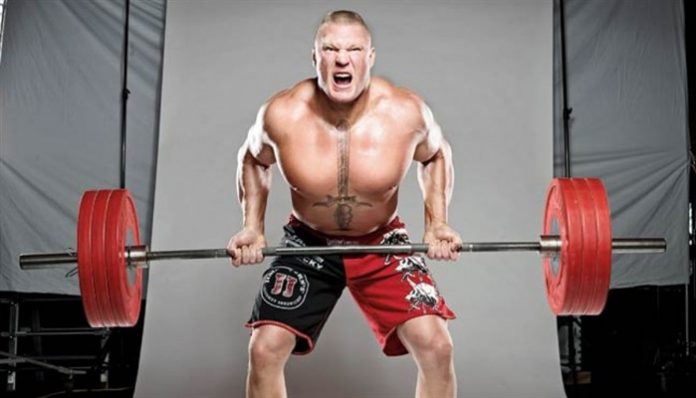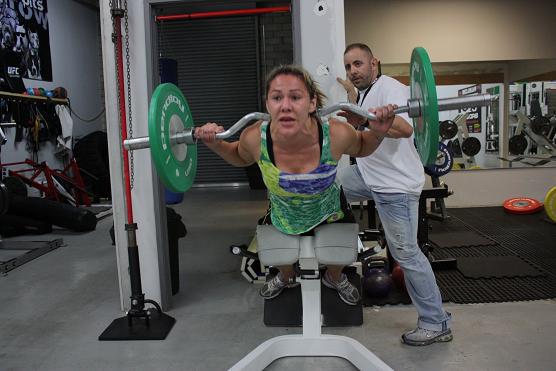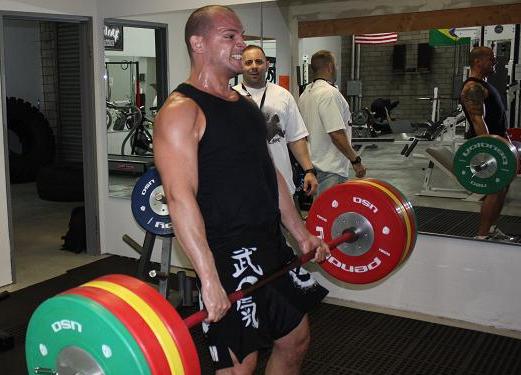
In the maze of information out there on how to train, it is really hard to choose a routine to fit in with BJJ training. The latest program is just a simple click away, full of novel movements and intricate strategies. Despite the availability of options on the internet, very few are applicable to the average grappler. Namely, weight training for BJJ is a very specific subject that requires expertise and knowledge. Not everyone can assume the strength needs of grappling martial arts practitioners. It takes a grappler, preferable that is an expert in weight training, to train a grappler.
Fortunately, lately, there is a lot of backlash in Ji-Jitsu circles against all the needless clutter. Despite the lucky handful, grapplers can’t really make a living through Brazilian Jiu-Jitsu. As such, the cannot train like a professional grappler or an MMA athlete. Even then, all those professionals have tailor-made routines to fit their needs. Discipline, organization, and understanding are all universal principles that have stood the test of time. Apply them to any training environment and you’ll come up with solid results. In terms of weight training for BJJ, the most important rule is to think simple.
How To Keep Workouts Simple
If you’re just starting out, look at some of the lifting programs of the guys from the 50s and 60s. They were simplistic in nature which made them very effective. They were void of complex systems requiring meticulous record-keeping and confusing sequences of execution. Granted, you could argue that this was before science got its hands into the exercise realm, but you can’t dispute the results!
If you’re the type who loves to lift in addition to BJJ, think back. Remember your early days when increases in muscle, strength, or whatever your goals were, came quickly? It was the basics that got you there. It was your efforts toward the necessities and little else that enabled you to focus on just a few simple principles.
When it comes to weight training for BJJ the subject gets a bit more complex. Most people think things must become more scientific, “functional” and sport-specific. Well, it’s time for a brutal wake-up – there’s no sport-specific strength training! Strength is the strength, it is as simple as that. Train it correctly and it will translate well to your BJJ game, giving you an edge over the opposition.
In reality, simplifying your training will free up your attention, so you can apply more effort toward your goals. For a grappler that spends about 10 hours a week rolling on the mats. there’s no need for one-legged Bosu-ball curls with water weights Overcomplicated training leaves you constantly questioning your methods, and never settling on a clear path to work.
Key Principles Of Weight Training For BJJ
These rules of weight training for BJJ aren’t exactly rocket science. You’ve heard them before, but it’s important to get a quick review. Are you still following these vital principles of minimalist training?
Compound beats isolation: Although repeated to death, this still needs to be stressed again and again. As so many grapplers migrate to concentration curls and machines that meticulously isolate every muscle fiber, the message of the compound, the multi-joint movement has gotten lost.
Progression for success: This principle is key when you want any change to occur. For Jiu-Jitsu purposes, look towards progressive overload with moderate weights and reps. It’s fine to go heavier or lighter some days, as long as you’re constantly moving the needle forward.
Form and range of motion: This is another simple but seldom-followed principle. Learn to correctly brace, contract, and move each area of the body. For example, the deadlift has many technical aspects to consider other than just lifting a bar off the floor.
Simple Equipment For Complex Results
Here is a complete (albeit short) list of what you’ll need on to build a weight training for BJJ program. It isn’t sexy, but you also won’t have to go out and buy the latest gadget that tracks every rep, step, and breath. Feel free to add your own minimalist pieces of equipment, but just remember to keep it simple.
- Barbell
- Plates
- A pull-up bar
- Adjustable bench
- Squat or power rack
- Parallel dip bars
- Kettlebells
- TRX or Gymnastic rings
Effective Programming
When you choose a training program, make sure you can train at least two, preferably three nonconsecutive days per week (Monday, Wednesday, Friday or Tuesday, Thursday, Saturday). The non-lifting days would be the days you do Jiu-Jitsu.
First and foremost, make sure you go through a complete warm-up before every session, which includes general warm-up movements (walking, jogging, dynamic mobility) along with specific warm-up patterns for each area that’s going to be trained.
Also, stick with your program for at least four weeks, or even better, six. This will enable your body to adapt and see results. After 4-6 weeks, take a few days off from weight training, and then either run the program again (with adjustments and slight changes) or choose a new program. Just keep up with the simple principles stated above.
Travis Stevens’ 3 weeks / 3x per Week Weight Lifting Program for Grapplers
A Jiu-Jitsu Workout Program To Lose Fat And Improve Performance


![Darce Choke Encyclopedia – Origins, Mechanics and Variations [2025] BJJ, choke, Brabo, BJJ Darce Choke, D'arce Choke, Darce BJJ Choke](https://bjj-world.com/wp-content/uploads/2017/11/JungPoirierLeeYahoo-218x150.jpg)













![Slicin’ Calves Mikey Musumeci DVD Review [2025] Slicin' Calves Mikey Musumeci DVD Review](https://bjj-world.com/wp-content/uploads/2025/04/slicin-calves-mikey-musumeci-dvd-review-218x150.png)
![Jiu-Jitsu For Old Guys Guard Retention Bernardo Faria DVD Review [2025] Jiu-Jitsu For Old Guys Guard Retention Bernardo Faria DVD Review](https://bjj-world.com/wp-content/uploads/2025/03/old-guys-guard-retention-bernardo-faria-dvd-review-218x150.png)
![X-Guard Trickery Kyle Sleeman DVD Review [2025] X-Guard Trickery Kyle Sleeman DVD Review](https://bjj-world.com/wp-content/uploads/2025/03/x-guard-trickery-kyle-sleeman-dvd-review-218x150.png)
![Countering with Crab Ride Anthony Budion DVD Review [2025] Countering with Crab Ride Anthony Budion DVD Review](https://bjj-world.com/wp-content/uploads/2025/03/countering-with-crab-ride-anthony-budion-dvd-review-218x150.png)
![Advanced Chin Control Concepts David Petrone DVD Review [2025] Advanced Chin Control Concepts David Petrone DVD Review](https://bjj-world.com/wp-content/uploads/2025/01/chin-control-concepts-david-petrone-dvd-review-324x235.png)
![Shin to Shin Eoghan O’Flanagan DVD Review [2025] Shin to Shin Eoghan O'Flanagan DVD Review](https://bjj-world.com/wp-content/uploads/2024/12/shin-to-shin-eoghan-oflanagan-dvd-review-100x70.png)
![Modern Split Squat Passing Jason Rau DVD Review [2024] Modern Split Squat Passing Jason Rau DVD Review](https://bjj-world.com/wp-content/uploads/2024/11/modern-split-squat-passing-jason-rau-dvd-review-100x70.png)
![Edging Yourself Out Of Danger Craig Jones DVD Review [2024] Edging Yourself Out Of Danger Craig Jones DVD Review](https://bjj-world.com/wp-content/uploads/2024/12/edging-yourself-out-of-danger-craig-jones-dvd-review-100x70.png)
![Slicin’ Calves Mikey Musumeci DVD Review [2025] Slicin' Calves Mikey Musumeci DVD Review](https://bjj-world.com/wp-content/uploads/2025/04/slicin-calves-mikey-musumeci-dvd-review-100x70.png)
![The Empty Half Guard Michael Currier DVD Review [2025] The Empty Half Guard Michael Currier DVD Review](https://bjj-world.com/wp-content/uploads/2025/03/empty-half-guard-michael-currier-dvd-review-100x70.png)

![Lockdown Quickstart Guide Cameron Mellott DVD Review [2025] Lockdown Quickstart Guide Cameron Mellott DVD Review](https://bjj-world.com/wp-content/uploads/2025/03/lockdown-quickstart-guide-cameron-mellott-dvd-review-100x70.png)
![Back Hacks Yigit Haney BJJ DVD Review [2025] Back Hacks Yigit Haney BJJ DVD Review](https://bjj-world.com/wp-content/uploads/2024/12/back-hacks-yigit-haney-bjj-dvd-review-100x70.png)

![Upper Body Chain Attacks Janine Mocaiber DVD Review [2025] Upper Body Chain Attacks Janine Mocaiber DVD Review](https://bjj-world.com/wp-content/uploads/2025/03/upper-body-chain-attacks-janine-mocaiber-dvd-review-100x70.png)


![Creating Back Exposure Luke Griffith DVD Review [2025] Creating Back Exposure Luke Griffith DVD Review](https://bjj-world.com/wp-content/uploads/2025/01/creating-back-exposure-luke-griffith-dvd-review-100x70.png)
![Higher Tripod Passing Craig Jones DVD Review [2025] Higher Tripod Passing Craig Jones DVD Review](https://bjj-world.com/wp-content/uploads/2025/02/higher-tripod-passing-craig-jones-dvd-review-100x70.png)

![No-Gi Pressure Mastery JT Torres DVD Review [2024] No-Gi Pressure Mastery JT Torres DVD Review](https://bjj-world.com/wp-content/uploads/2024/10/no-gi-pressure-mastery-jt-torres-dvd-review-100x70.png)


![Double Sleeve Guard Jon Thomas BJJ DVD Review [2024] Double Sleeve Guard Jon Thomas BJJ DVD Review](https://bjj-world.com/wp-content/uploads/2024/10/double-sleeve-guard-jon-thomas-bjj-dvd-review-100x70.png)
![Giancarlo Bodoni DVD Bundle Essential Connections Full Review [2024] Giancarlo Bodoni DVD Bundle Essential Connections Full Review](https://bjj-world.com/wp-content/uploads/2024/09/giancarlo-bodoni-dvd-bundle-essential-connections-100x70.png)




![Closet Closed Guard Craig Jones DVD Review [2025] Closet Closed Guard Craig Jones DVD Review](https://bjj-world.com/wp-content/uploads/2025/03/closet-closed-guard-craig-jones-dvd-review-100x70.png)
